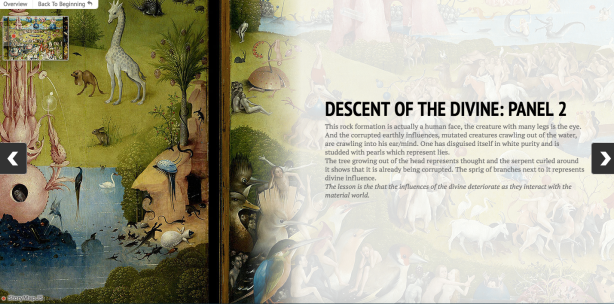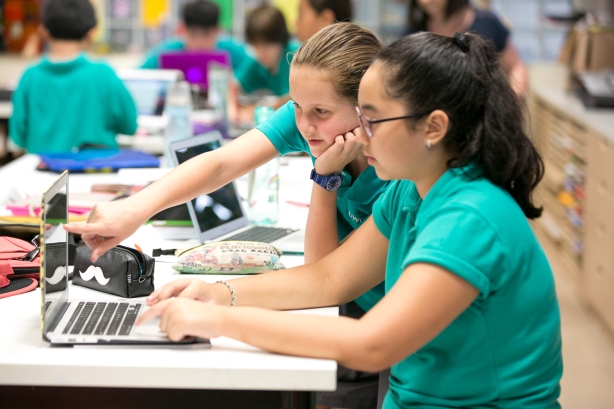
Art classroom, UWCSEA Dover, Singapore
What does learning look like in the modern classroom?
If you visit a classroom today, you may notice that learning is quite different from when you were at school. Students work in groups, collaborating on a document or slideshow on a laptop, or independently researching with the teacher circulating as a guide. Even in the last 10 years, teaching and learning have changed with the rapid advances in technology, and devices being common in the classroom. In UWCSEA, we are a 1:1 Macbook school and, in the 7 years I have worked here, laptop use, Google Apps (now GSuite) and the online learning platform Teamie have dramatically transformed the way we teach and how youngsters learn. In my art room, I may flip the learning and set a video task using Edpuzzle to draw out prior knowledge or to see what they can recall and apply. I use Google Slides and Padlet to share work as a portfolio of learning and to track progress, and Hyperdocs to set a range of content to support, satisfy, and stretch my developing artists. Across the school, learning is all around, as groups film or photograph, annotate a diagram on iPads, and it is visible on post its, anchor charts and posters, as role play or animation, online and on the walls. It is an exciting time to learn.
Learning from the past
But it didn’t always look like this. When I was at school we sat in rows, listened to the teacher, worked through sheets or books and produced set tasks for marking. There was no one to one conference about my prior knowledge and skills, this was assumed. There was no group work or collaboration, only individual work, theories, books, and it was content driven. My learning centred around the acquisition of knowledge and skills.
All learners want to be engaged, to understand the reason for the learning and to apply the knowledge. I recall being around 17 years old, enthralled on a geography field trip, immersed in the physical attributes of the rugged coast of southern England, up close and in context. Again, in an English Language class, with an inspiring young teacher who connected us to foreign penpals by writing letters to share how we live. In both these examples we, as learners, were moving from acquisition to participation, and, according to Anna Sfard’s article “On Two Metaphors for Learning”, we would retain this new learning better through practical application and active participation. (Sfard, 1998)
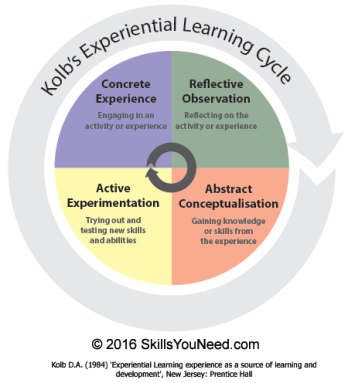
David Kolb’s model of experiential learning is as relevant today, supporting students to apply their knowledge and understanding through hands-on, practical activities, reflecting on the process and experimenting. (Kolb’s Learning Cycle, 1984).
To learn we need to be actively engaged in the learning process whilst at the same time being aware of what and why we are doing it. This active learning, according to Charles Bonwell, of “doing things and thinking about what they are doing” is a fundamental part of learning, leading to greater student participation and retention. (Bonwell, 1991)
What is learning and what does this mean in the contemporary classroom?
Learning is the acquisition of skills and knowledge, engaging in the content and the ability to apply this to new contexts and tasks.
John Hattie states in the Science of Learning that “learning must be embedded in something worth knowing”. (Hattie, 2016) Students need to understand the relevance of the knowledge, skill or understanding so that they can make sense of it in relation to their own lives.

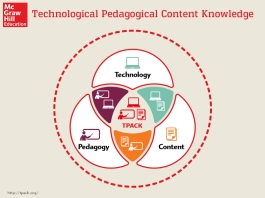
At UWCSEA we frame our teaching around Lynn Erickson’s concept-based learning and, as digital literacy coaches, we are using TPACK (Technological Pedagogical Content Knowledge) to focus our conversations with teachers on how technology can make a difference in conceptual learning. (Erickson, 2014) Focusing on transferable concepts and the relationships between these concepts allows richer learning experiences to develop. In today’s classroom, integrating technology as a tool to enhance learning, not as a substitution, transforms the learning in a way not possible before. (Puentedura SAMR, 2009)
How has it changed? The changing face of teaching and learning
In the modern classroom, learning is still centred around the acquisition of skills and knowledge, but also experiencing this in an understandable context to fully comprehend the meaning and reason for this learning. Schools have embraced students’ preferred style of personal learning through videos, utilising Kahn academy, YouTube and TED talks to immerse students in the learning. Engaging with real-world contexts aids understanding and technology can bring the world into the classroom through examples such as Skyping experts and visiting online galleries and museums. Learning for today’s students is no longer a lonely existence but involves group work and collaboration. Connecting with others both in the classroom and outside develops skills in communication but can also open up thinking and see the learning in a different context. Collaborations are commonplace with the ease of Google Suite, online software such as Mindmeister and learning platforms like Edmodo or Teamie. As described by AJ Juliani in his book Empower with John Spencer, the teacher should now be more of a guide on the side, giving up power and control to allow students to own their learning. (Juliani, 2017)
Making it stick. How can contemporary learning be realised?
It is important to remember that effective learning stems from good teaching and this does not change no matter what the new app, device or strategy is. We often hear that the best app is still the teacher, especially in a technology-enhanced classroom.
Pedagogy is important, as is knowing your students’ needs and accessing their prior knowledge. Teachers must be adaptable and willing to embrace change to transform learning yet retaining its’ relevance.
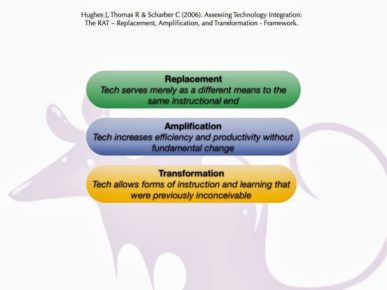
Whether using the lens of concept-based learning, the framework of TPACK, SAMR or RAT (Hughes, Thomas and Scharber, 2006) or the new most favoured pedagogical swing, students’ needs, both now and in the future, should be at the centre of the choices teachers make. We should ensure that students are involved in the process and that real-world examples provide relevance to their learning for greater engagement, motivation and retention. In an ideal world, developing individualised learning would ensure each student learns in their preferred style whilst accessing their interests and prior knowledge and skills. Leveraging our experiences with technology and how it can transform learning should be a shared experience, where teachers learn from other teachers. Technology can ease this through online communities such as Twitter to share best practice and practical application.
Keeping up with all the latest apps is not always the best route towards realising an effective learning environment, as the focus should always be on the learning, not the technology.
What will be the next big thing in education, what new strategy or innovation will shape the next decade of learning? What will tomorrow’s classroom resemble and what difference will it make to the way we learn?
Tomorrow’s World?
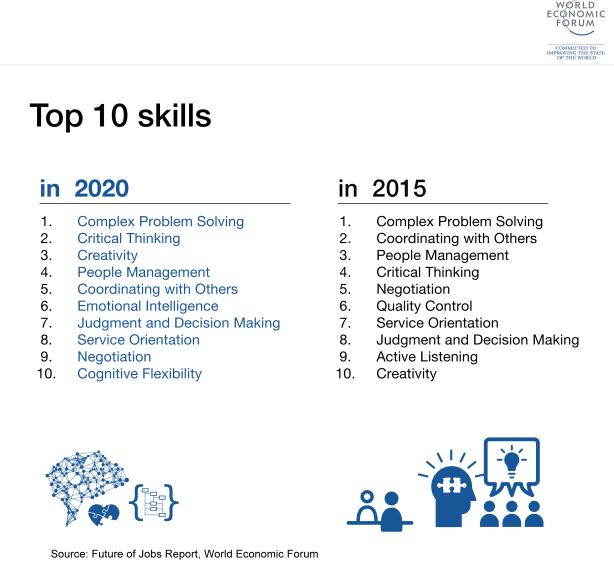
In the near future, students will need to navigate a rich tapestry of opportunities where technology competence is crucial. Digital literacy will be on a par with reading. The World Economic Forum published an updated list of the skills necessary for 2020 including complex problem solving, critical thinking and creativity at the top. We need to be teaching students how to learn more independently through active participation and divergent thinking. (World Economic Forum, 2016)
In Future-oriented Education by Marc Prensky, Prensky talks about these same skills required, viewing technology as the “new foundation of education”. (Prensky, 2013) In a previous article “Shaping tech for the Classroom” (Edutopia, 2005) he discusses that instead of “doing old things in new ways’ teachers work towards doing “new things in new ways”, developing innovative approaches to teaching and learning. Already AR and VR are leading the way forward with immersive technology bringing together the digital and the physical world. It is our responsibility to prepare our students for a world that we do not know and for jobs which we cannot imagine by building resilient, motivated and creative thinkers.
How are you preparing your students for tomorrow’s world?
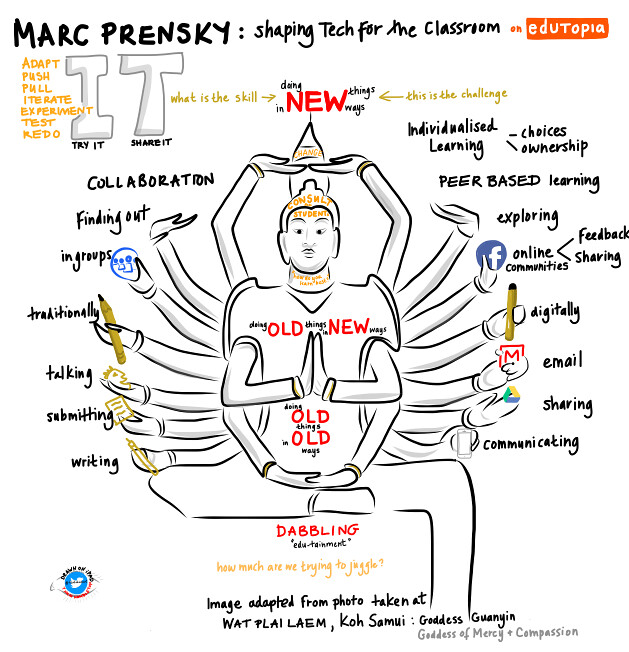
Visual note from Marc Prensky’s Shaping Tech for the Classroom by Nicki Hambleton
References
Bonwell, C. C., & Sutherland, T. E. (1996). The active learning continuum: Choosing activities to engage students in the classroom. New Directions for Teaching and Learning, 1996(67), 3-16. doi:10.1002/tl.37219966704
Erickson, H. L., & Lanning, L. A. (2014). Transitioning to concept-based curriculum and instruction: How to bring content and process together. Corwin, a SAGE Company.
Hattie, J. A., & Donoghue, G. M. (2016, August 10). Learning strategies: A synthesis and conceptual model. Retrieved from https://www.nature.com/articles/npjscilearn201613
Hughes, J., Thomas, R., & Scharber, C. (2006, March 19). Assessing Technology Integration: The RAT – Replacement, Amplification, and Transformation – Framework. Retrieved from https://www.learntechlib.org/p/22293/
Kolb, D. (2000). The Process of Experiential Learning. Strategic Learning in a Knowledge Economy, 313-331. doi:10.1016/b978-0-7506-7223-8.50017-4
Prensky, M. (2005, December 02). Shaping Tech for the Classroom. Retrieved from https://www.edutopia.org/adopt-and-adapt-shaping-tech-for-classroom
Ruben, A. (n.d.). SAMR: A Brief Introduction. Retrieved from http://hippasus.com/blog/archives/227
Sfard, A. (1998, 03). On Two Metaphors for Learning and the Dangers of Choosing Just One. Educational Researcher, 27(2), 4. doi:10.2307/1176193
Spencer, J., & Juliani, A. J. (2017). Empower: What happens when students own their learning. IMpress.
Teaching effectively with technology: TPACK, SAMR, RAT. (n.d.). Retrieved from https://micool.org/updates/blog/2016/06/09/teaching-effectively-with-technology-tpack-samr-rat/
Written by Jenny Soffel, Website Editor, World Economic Forum. (n.d.). What are the 21st-century skills every student needs? Retrieved from https://www.weforum.org/agenda/2016/03/21st-century-skills-future-jobs-students/
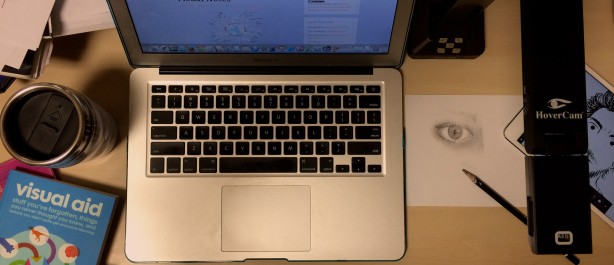 My Desk – tradigital tools
My Desk – tradigital tools